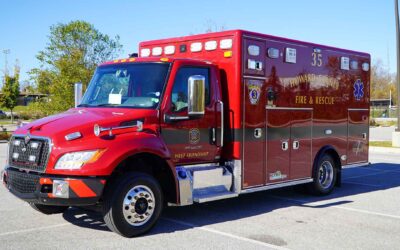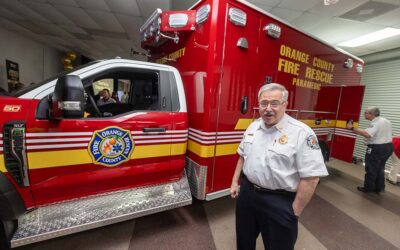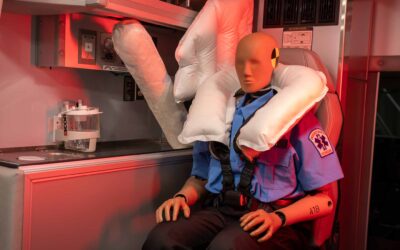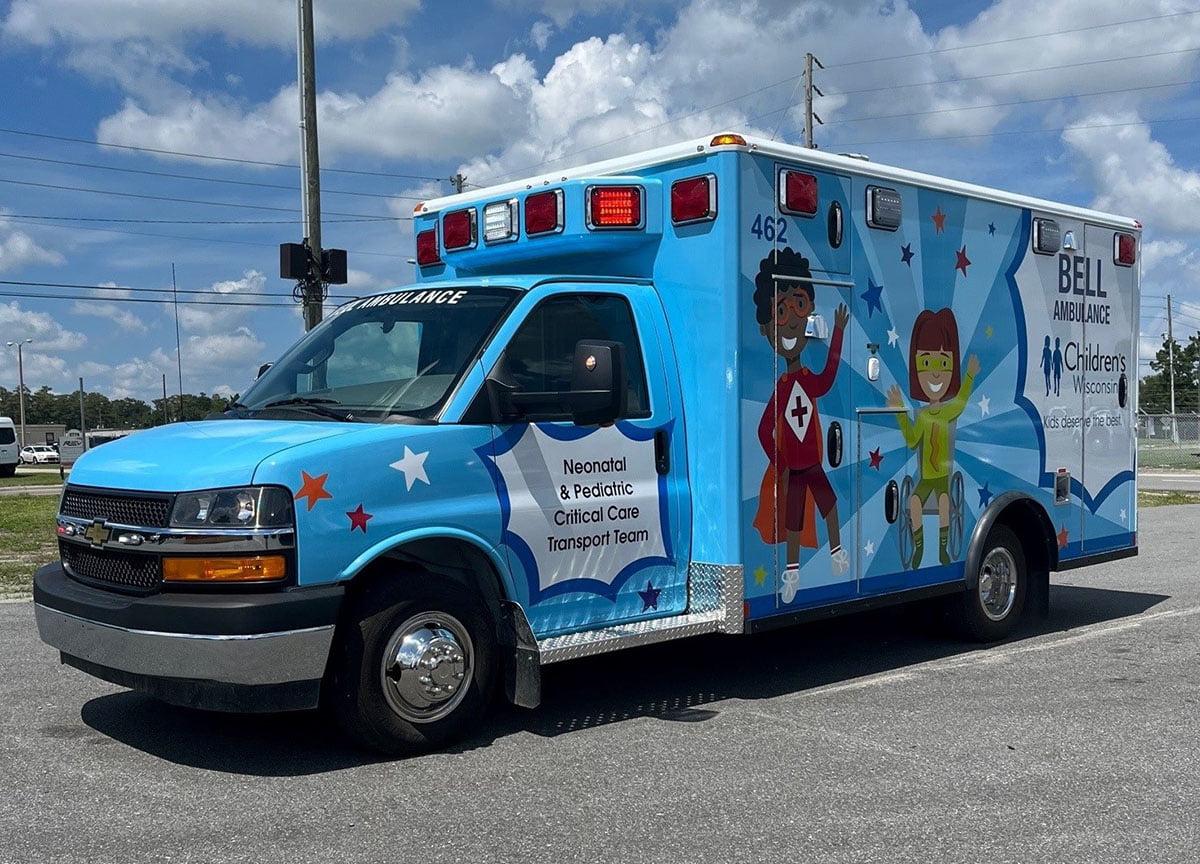
Wheeled Coach built this neonatal and pediatric critical care Type 3 ambulance for Bell Ambulance Inc. in Wisconsin. (Photos courtesy of Wheeled Coach.)
By Alan M. Petrillo
Bell Ambulance Inc. has grown to become the largest ambulance provider in Wisconsin, with more than 600 staff members, including EMTs, paramedics and critical care paramedics operating out of nine stations, including three firehouses, in the southeastern part of the state.
The agency’s is the largest critical care provider in the state and operates two critical care ambulances for Children’s Wisconsin, one of two stand-alone pediatric hospitals in the state. Chris Anderson, Bell Ambulance’s director of operations, says his agency wanted to replace a 2012 critical care ambulance that had been remounted once, so it put together a team of people from Children’s Wisconsin who drove the design of the new rig it was seeking.
“We asked the transport team to consider the past rigs we’ve provided, and to design a new one that integrates everything they’ve learned and seen in the field and had to use on the rig since that earlier ambulance,” Anderson points out. “We had a Wheeled Coach factory rep visit us and work with the Children’s Wisconsin, and they came up with pencil sketches of the design they wanted, which Wheeled Coach turned into 3D drawings, and ultimately the ambulance.”
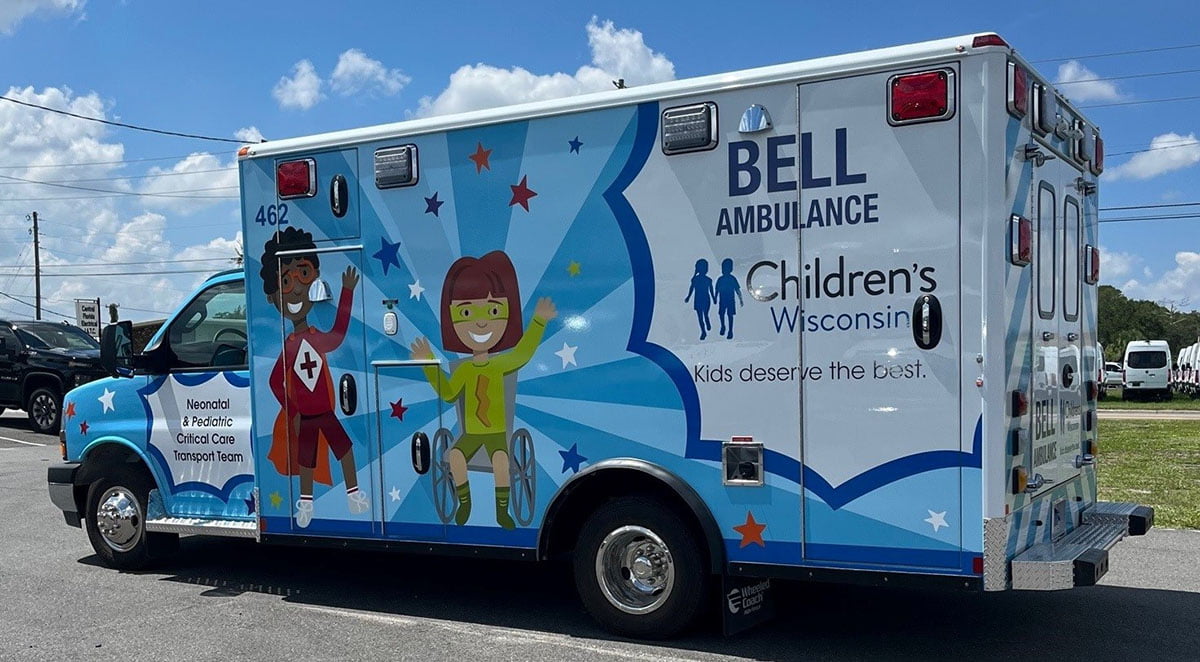
The Bell Ambulance rig is on a 2023 Chevy G4500 chassis with a 170-inch body that has 72-inches of headroom and is powered by a 6.6-liter gasoline engine.
Paul Holzapfel, sales operation director for Wheeled Coach, says the finished product is a Type 3 ambulance on a 2023 Chevy G4500 chassis with a 170-inch body, a pass through from the cab, 72-inches of headroom in the patient module that has a door-forward design, powered by a 6.6-liter gasoline engine. He adds that the ambulance has a MORryde rear suspension upgrade, power locks on the modular entry doors, fixed privacy tint windows, and a four-inch drop skirt on the curb side.
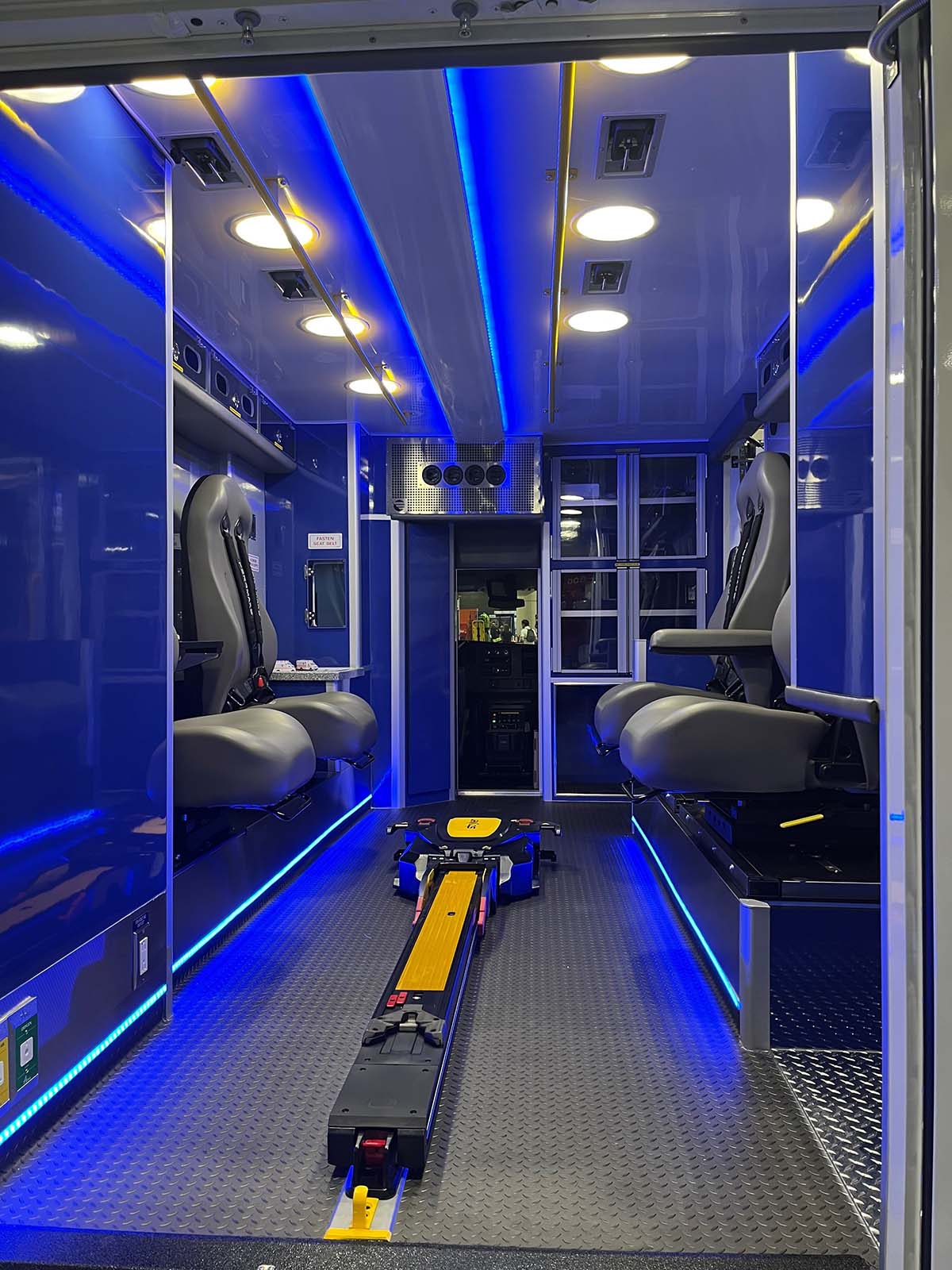
The interior of the patient module eliminates the traditional attendant’s seat at the head of the cot and has four seating positions, two on each side, all protected by Per4Max four-point harnesses.
Anderson says that the critical care transport rig typically has an EMT operating the vehicle, while the hospital provides a nurse and respiratory therapist in the back for a transport. “We usually do four transports a day with the two critical care transport ambulances we have dedicated to them,” he notes. “This new rig is so successful that we are building a second critical care transport ambulance for them with Wheeled Coach that will be finished in the spring of next year.”
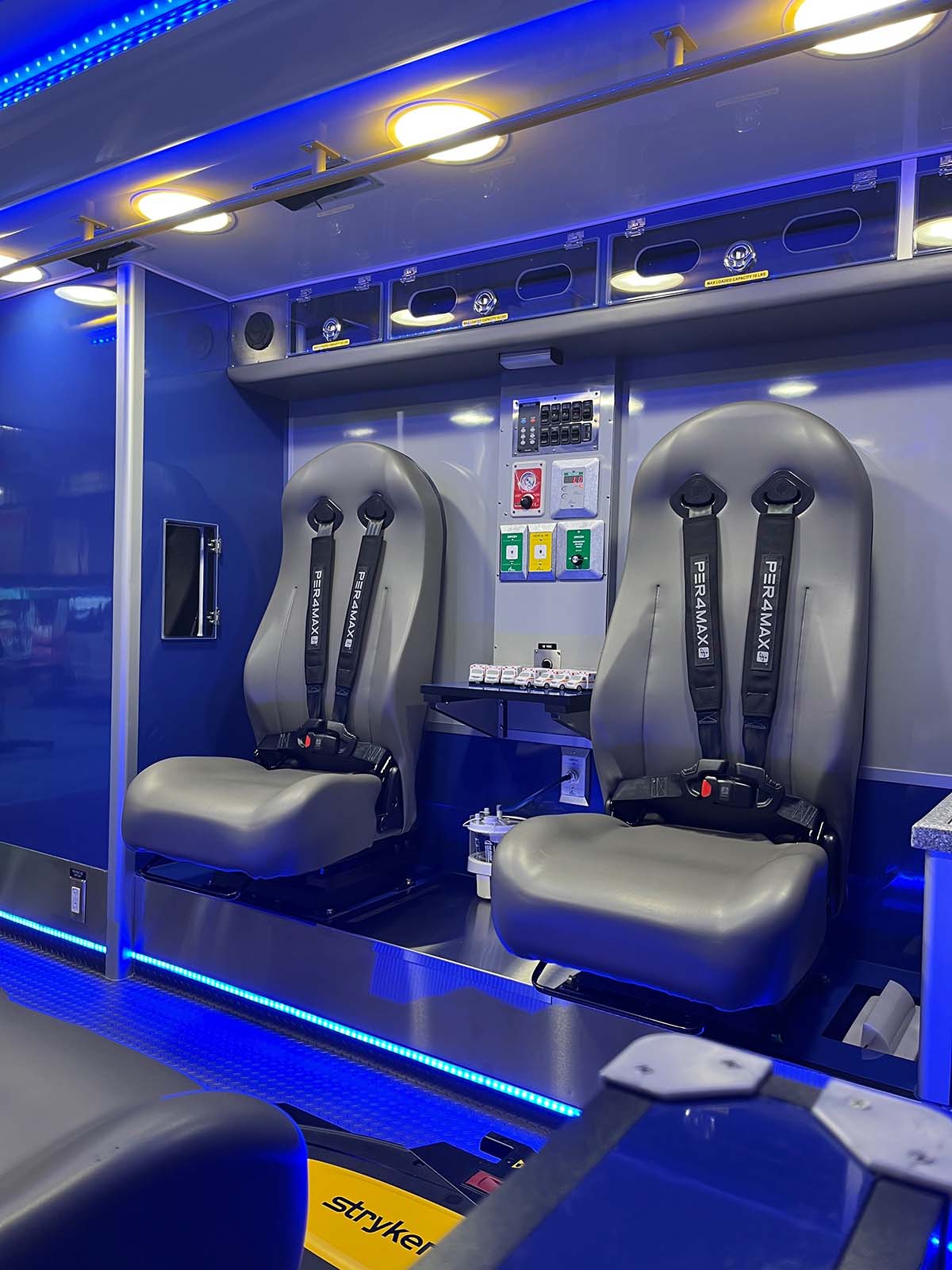
The two seats on the curb side of the patient box are able to swivel and slide forward and back on a track.
The current rig has four seats in the patient module, two against each side wall, all protected byPer4Max four-point seat harnesses. “We didn’t want an attendant’s seat at the head of the cot because there is better access to the patient from the sides of the cot,” he says. The two seating positions on the driver’s side are fixed, while the two seats on the curb side are able to slide forward and back along a track, and also swivel.
The new rig has two primary cot devices, Anderson says. “The first is a standard Stryker PowerLOAD and PowerCOT that can handle transport of a patient up to a 17-year-old,” he says. “We also have a Ferno Pedi Mate that attaches to the cot and creates a restraint system to use for a small child. The second unit is a Stryker PowerCOT frame that carries an Isolet, along with batteries and oxygen tanks. The unit weighs about 350 pounds.”
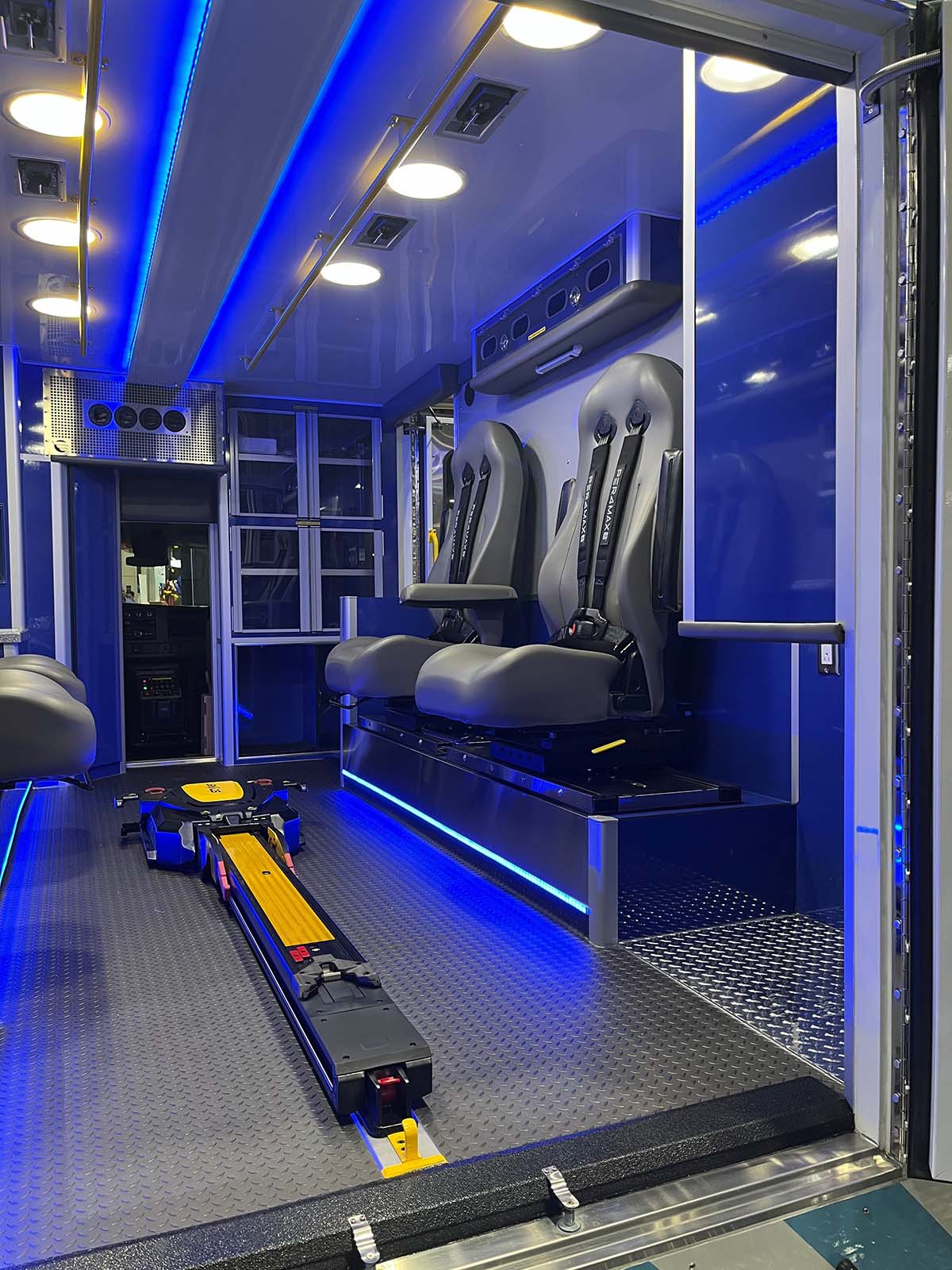
The Bell critical care ambulance is set up to carry a Stryker PowerLOAD and PowerCOT, as well as a PowerCOT frame that holds an Isolet unit.
Anderson says that the exterior warning and scene lighting on the rig is Whelen LED lighting, and the interior lighting in the patient module is Whelen LED dome lighting, plus indirect lighting along the ceiling and above the base of the floors which can be switched from white to blue during long transports.
ALAN M. PETRILLO is a Tucson, Arizona-based journalist, the author of three novels and five nonfiction books, and a member of the Fire Apparatus & Emergency Equipment Editorial Advisory Board. He served 22 years with the Verdoy (NY) Fire Department, including in the position of chief.

